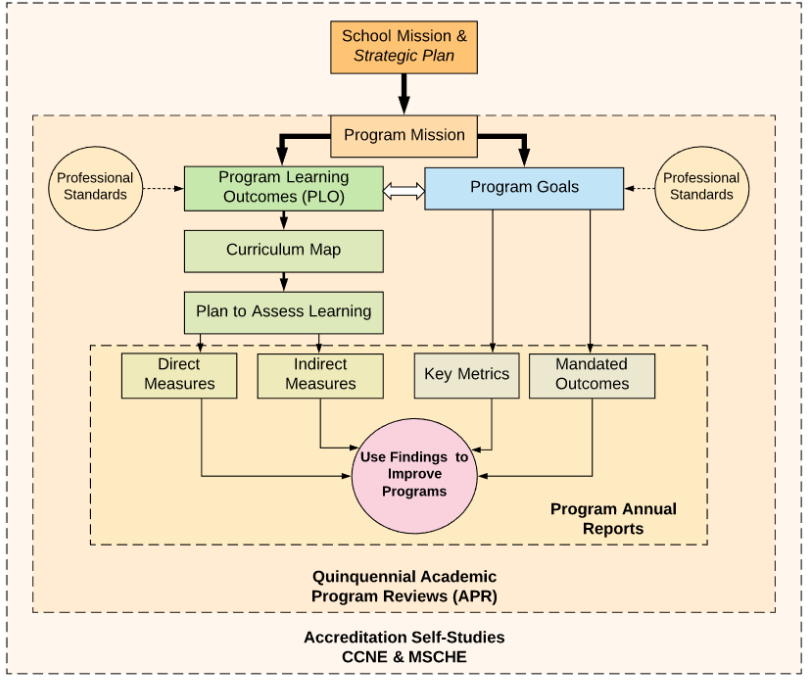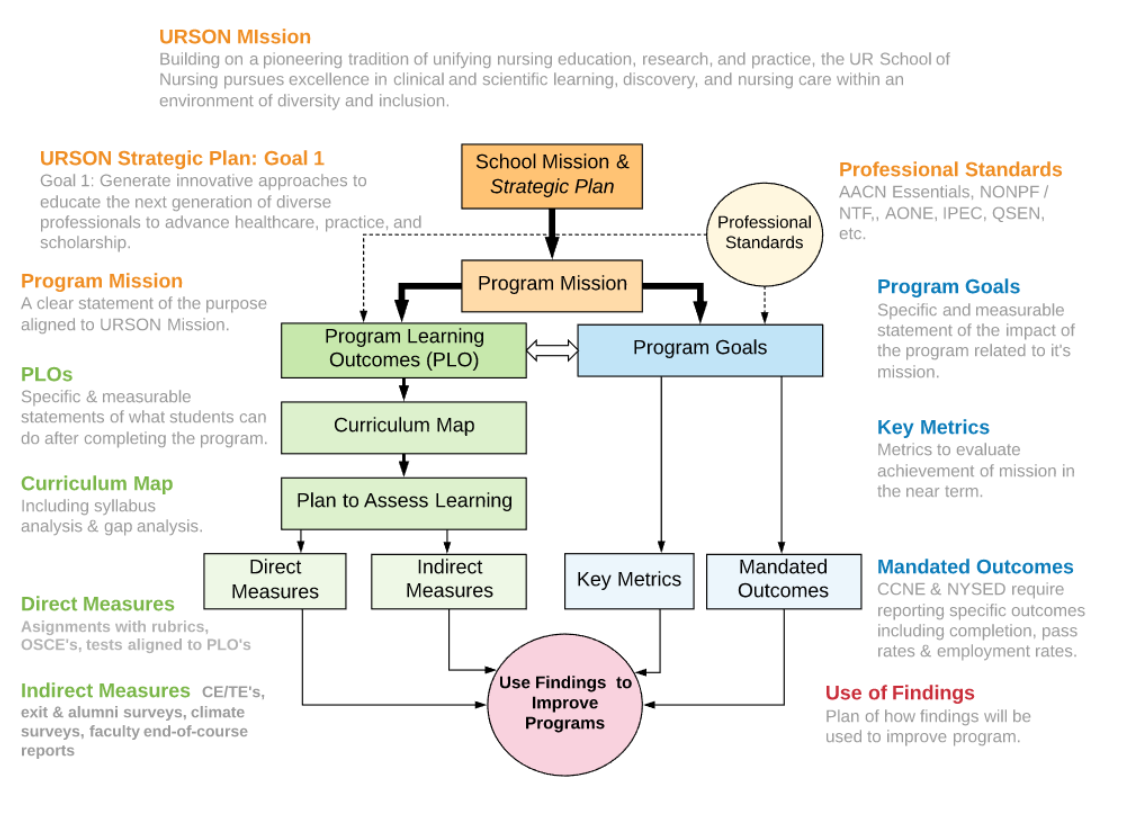School of Nursing Assessment Plan
Updated Summer 2021
Executive Summary
1. Mission
Building on a pioneering tradition of unifying nursing education, research, and practice, the UR School of Nursing (URSON) pursues excellence in clinical and scientific learning, discovery, and nursing care within an environment of diversity and inclusion.
2. Program Goal
The overarching goal across academic programs at the school of nursing is to educate the next generation of diverse professionals to advance healthcare practice and scholarship. The URSON has baccalaureate (Accelerated Program for Non-Nurses & RN to BS) master’s (nurse practitioner, leadership in health care systems, & nurse educator) and doctoral (DNP & Ph.D.) educational programs. Each of these programs has a clearly delineated set of program learning outcomes which represent competencies required for professional practice, and these are available on the School’s website and in the Student Handbook.
3. Data Collection Tools and Approaches
Data collected to assess educational effectiveness include Commission on Collegiate Nursing Education (CCNE) mandated outcomes (completion rates, retention rates, employment rates, and certification exam pass rates) as well as program learning outcomes and key metrics of student success. Program learning outcomes are assessed through direct and indirect measures of student learning. Direct measures include written assignments, presentations, or clinical performance assessed via rubrics aligned directly to program learning outcomes; or, by tests with blueprints aligned to learning outcomes. Tools used for direct assessment include ExamSoft testing software and Blackboard rubrics. Multiple programs are in the process of adopting AEFIS for ePortfolio assessment and outcomes transcripts, and this will allow the collection and aggregation of rubric data across programs. Indirect assessment of student learning occurs through the use of student satisfaction surveys, including course evaluations, teaching evaluations, and exit surveys. Figure 1 includes a diagram which illustrates these tools and approaches.
4. Use of Evidence
Evidence from these program data is used to inform program evaluation and to inform course and program revisions. Program evaluation occurs through a standardized process of annual program reviews and more in-depth quinquennial program evaluations. During annual program reviews, the Office of Institutional Effectiveness provides program faculty and directors with a summary of direct and indirect educational effectiveness data. During an annual program retreat, program faculty and directors review these data and use them to guide decision-making for course and program revisions. During the quinquennial program evaluation, the program is evaluated through a holistic process with a review of alignment between program mission, goals, program learning outcomes, courses, and learning activities. During this process, program goals and program learning outcomes are reviewed and aligned to the standards of accreditors including CCNE and Middle States Commission on Higher Education (MSCHE), government regulators including the New York State Education Department (NYSED), and professional organizations such as the National Organization of Nurse Practitioner Faculty (NONPF), as well as community needs identified by employers and other community stakeholders. Additionally, during this review, the curriculum is mapped to ensure continued alignment between program learning outcomes, courses, learning activities, and assessments. (See Figure 1).
5. Assessing the Process
Assessment of the assessment plan and process occur through ongoing discussions within the Curriculum Committee and the Senior Academic Leadership Team as concerns arise. The process is reviewed more formally during the quinquennial evaluation and in preparation for CCNE self-studies and continuous improvement program reports.
Figure 1. Illustration of the University of Rochester School of Nursing Assessment Plan

Note. This diagram illustrates the components of the URSON assessment plan, including the relationship between the School’s vision, program mission, program learning outcomes, program goals, and assessment measures. Additionally, the illustration depicts the components evaluated in the annual program reporting process, quinquennial academic program reviews, and accreditation self-studies. See figure 2 (below) for the definition of terms on this diagram.
Figure 2: URSON Assessment Plan with Definitions

If you have trouble accessing the visuals on this page, please contact the Office of Academic Administration.
